If you’re looking to buy an EV, then you should know that there are some financial perks to buying a brand new model. Ever since 2010, it’s been possible to reclaim some of the money you spent on an electric car thanks to an EV-centric federal tax credit.
That tax credit means you can reclaim some of the cost of buying the car — up to $7,500 in fact. This means the money you pay the dealership isn’t necessarily how much the car will cost you. But not every EV is eligible for the tax credit, and picking up a brand new Tesla won’t entitle you to a slightly lower tax bill.
So if you’re on the lookout for a new electric car, and want to be able reclaim some of the listed price, here are 10 great EVs that are still eligible for the $7,500 federal tax credit.
Nissan Leaf
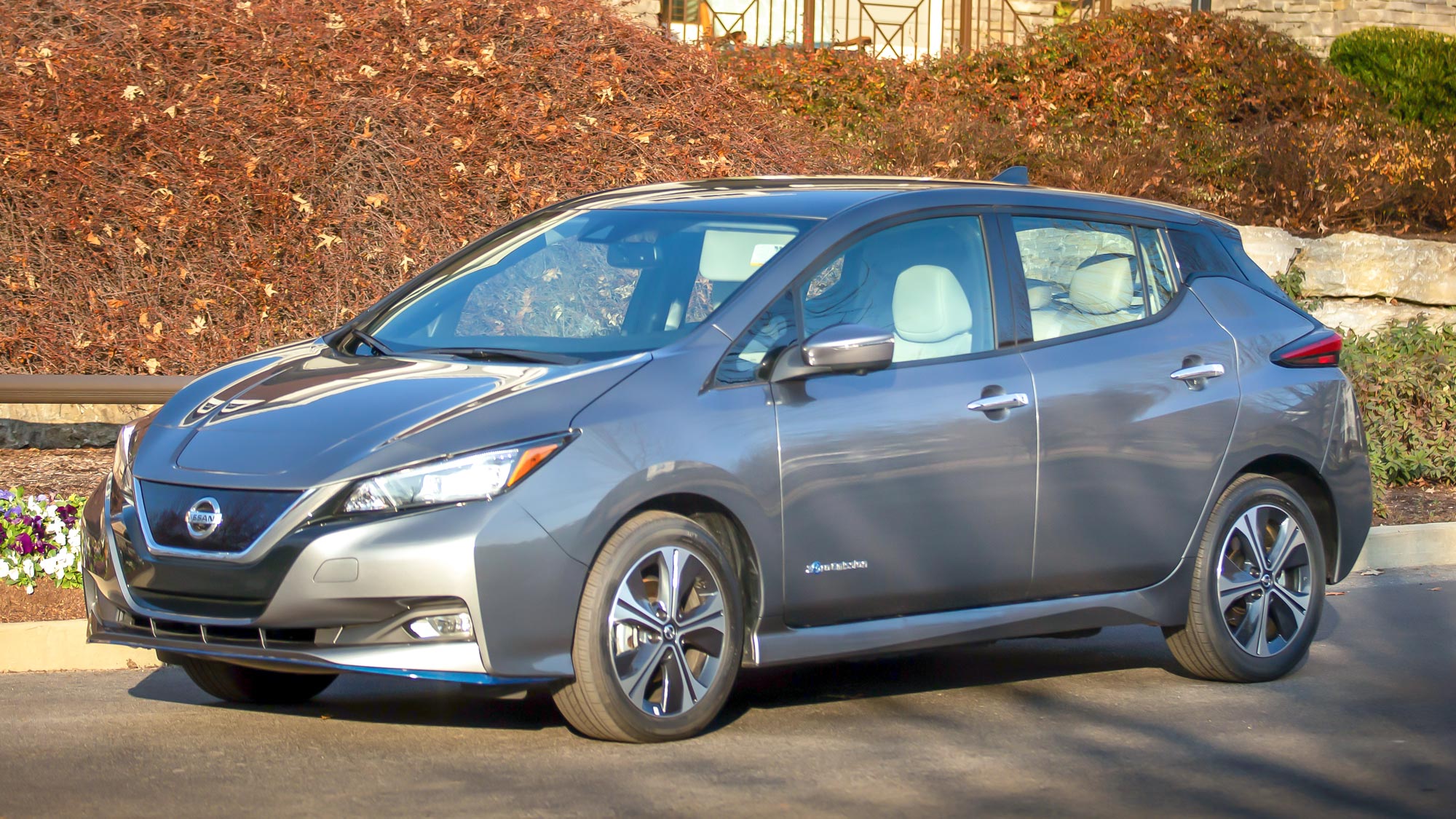
The Nissan Leaf is the least expensive EV currently on sale in the United States, with prices starting at just $27,400. Throw in the tax credit and that price can drop a lot lower, as low as $19,900 if you’re eligible for the full $7,500 credit. In our Nissan Leaf review, we noted that this particular EV is fantastic value for money — one of the reasons it’s on our list of the best electric cars.
There’s a pretty good selection of features and power in this budget offering too. In its cheapest form the Nissan Leaf offers 149 miles of range, 50 kW rapid charging, 148 horsepower, an 89 MPH top speed. The pricier 62 kWh model also offers 226 miles of range, 99 MPH top speed, 215 horsepower and 100 KW rapid charging. Both models have 15.4 cubic feet of trunk space, but folding down the rear seats and utilizing the passenger seat pushes the total up to 116 cubic feet.
The only downside is that Nissan is edging closer to the tax credit’s sales threshold. That means it’s only a matter of time before the car stops being eligible, and you’ll have to pay full price.
Polestar 2
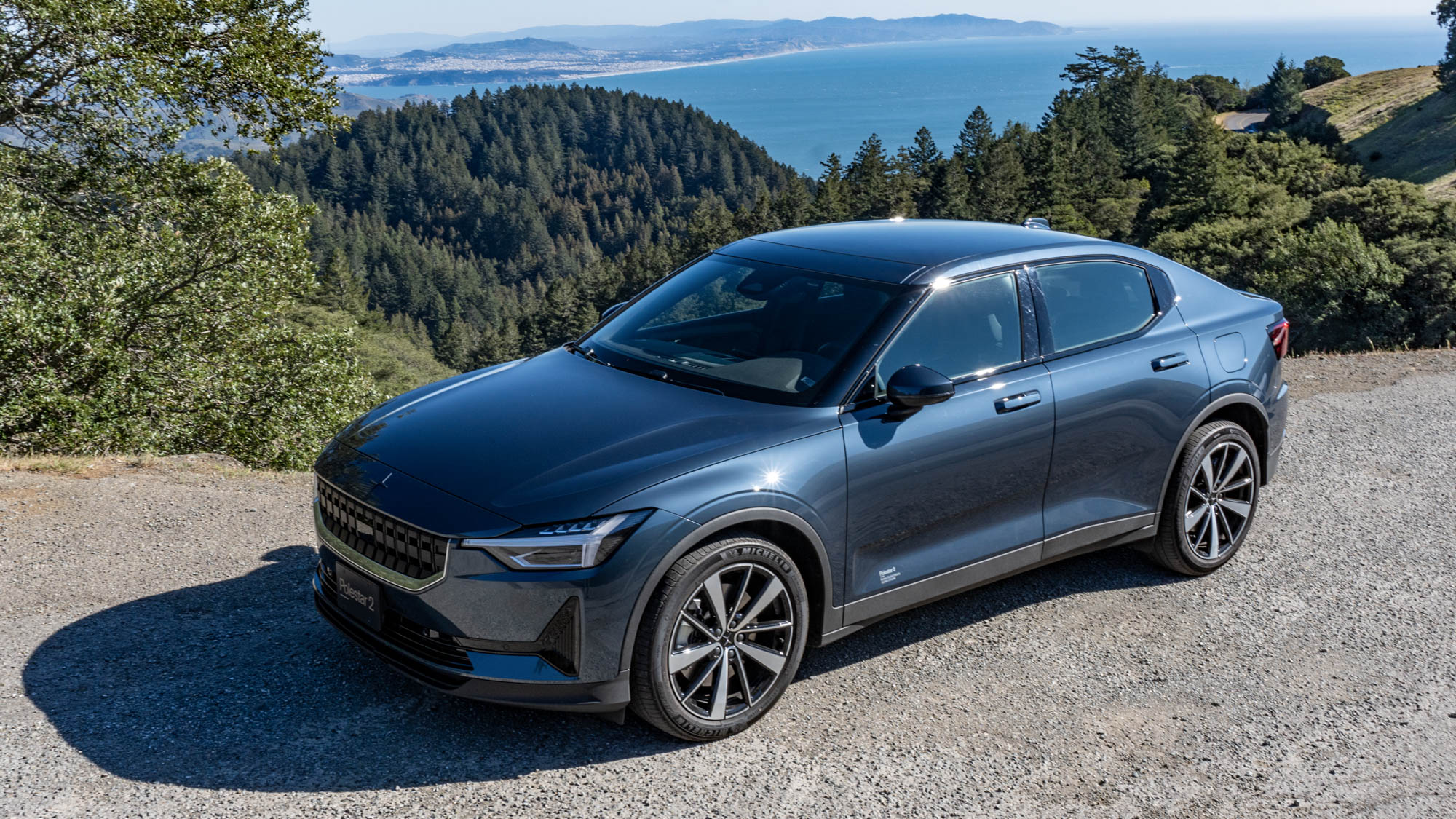
Volvo’s performance wing may not be a brand you’re intimately familiar with, but Polestar does make some very nice cars. The Polestar 2 is no exception, and just happens to be one of the best electric cars you can buy right now. The fact it’s eligible for the full $7,500 federal tax credit is the icing on the cake.
Prices start at $45,900, which can get you up to 270 miles of EPA-rated range and a 0-60 time of 7 seconds. If you’re willing to pay an extra $4,000, you can get the dual motor model with a reduced 249 mile range and a speedier 0-60 time of 4.5 seconds. One of the best features we noted in our Polestar 2 review is the fact it runs on Android Automotive OS, which gives Google Assistant access to more in-car systems than ever before. Sadly Apple CarPlay will be absent for the immediate future.
You also get Volvo’s Pilot Assist autonomous driver system. It’s also an incredibly stylish looking vehicle that manages to stand out without looking out of place on the roads.
Audi e-Tron GT

There are a number of Audi e-Tron models out there, but our favorite is the Gran Tourer model. It’s expensive, starting at $102,400, but that means the tax credit can lessen the blow a little bit. But you get a lot for that money, least of all a 0-60 time of 3.1 seconds and up to 238 miles of EPA rated range.
While the back seats are a little closed off from the outside world, one of the few negatives in our Audi E-Tron GT review, the car is still plenty of fun to drive. Least of all because of the acceleration, but also because the design has you much closer to the ground than you’d be in an SUV.
In top of that you get 270kW charging which can take you from 5-80% charge in 21 minutes, and a smorgasbord of interior tech. A virtual heads-up display, multi-color LED interior accent lighting, adaptive cruise control, a 10.1-inch infotainment display and hands-free voice commands.
Ford Mustang Mach-E
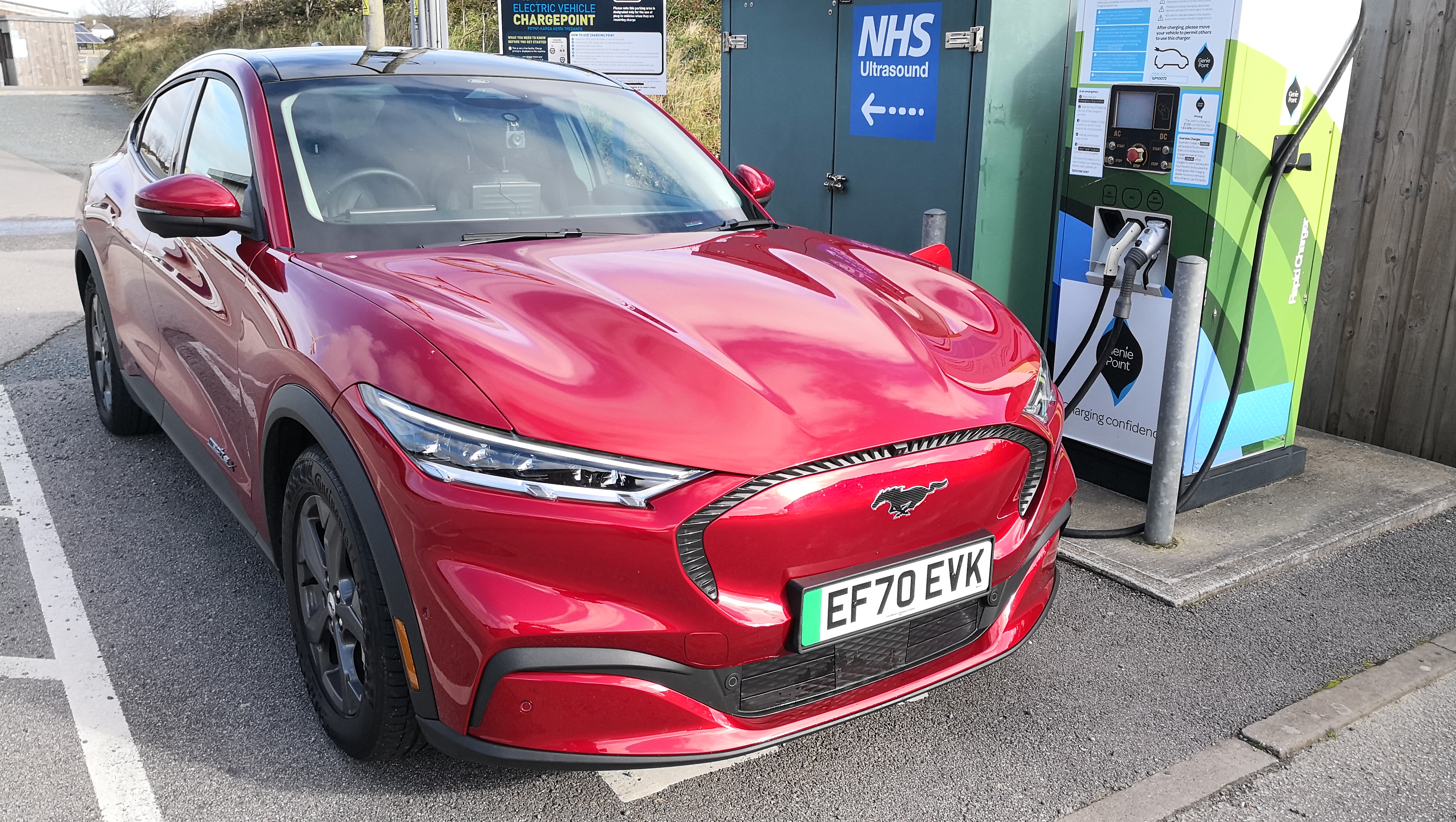
Ford’s first (and currently only) EV on sale really knocked the ball out of the park. Prices for this car start at $43,895, the 0-60 time is 3.5 seconds and you can get up to 314 miles of range — a stark improvement since we posted our Ford Mustang Mach-E review. It doesn’t take a genius to realize that the Mach-E has something for everyone. Even if it isn’t a Mustang in the traditional sense.
Also along for the ride is Ford’s Pro Pilot 360 2.0 driver assistance package. That has all the usual features like blind spot warning, lane keeping, adaptive cruise control and more. BlueCruise, the autonomous driving system, is also one of the few that lets you take your hands off the wheel for certain periods of time.
The 15.5-inch portrait touchscreen even features personalization features, thanks to cloud connectivity. Plus it has buttons and a dial, rather than focusing on touchscreen controls like all too many other electric cars.
Hyundai IONIQ 5
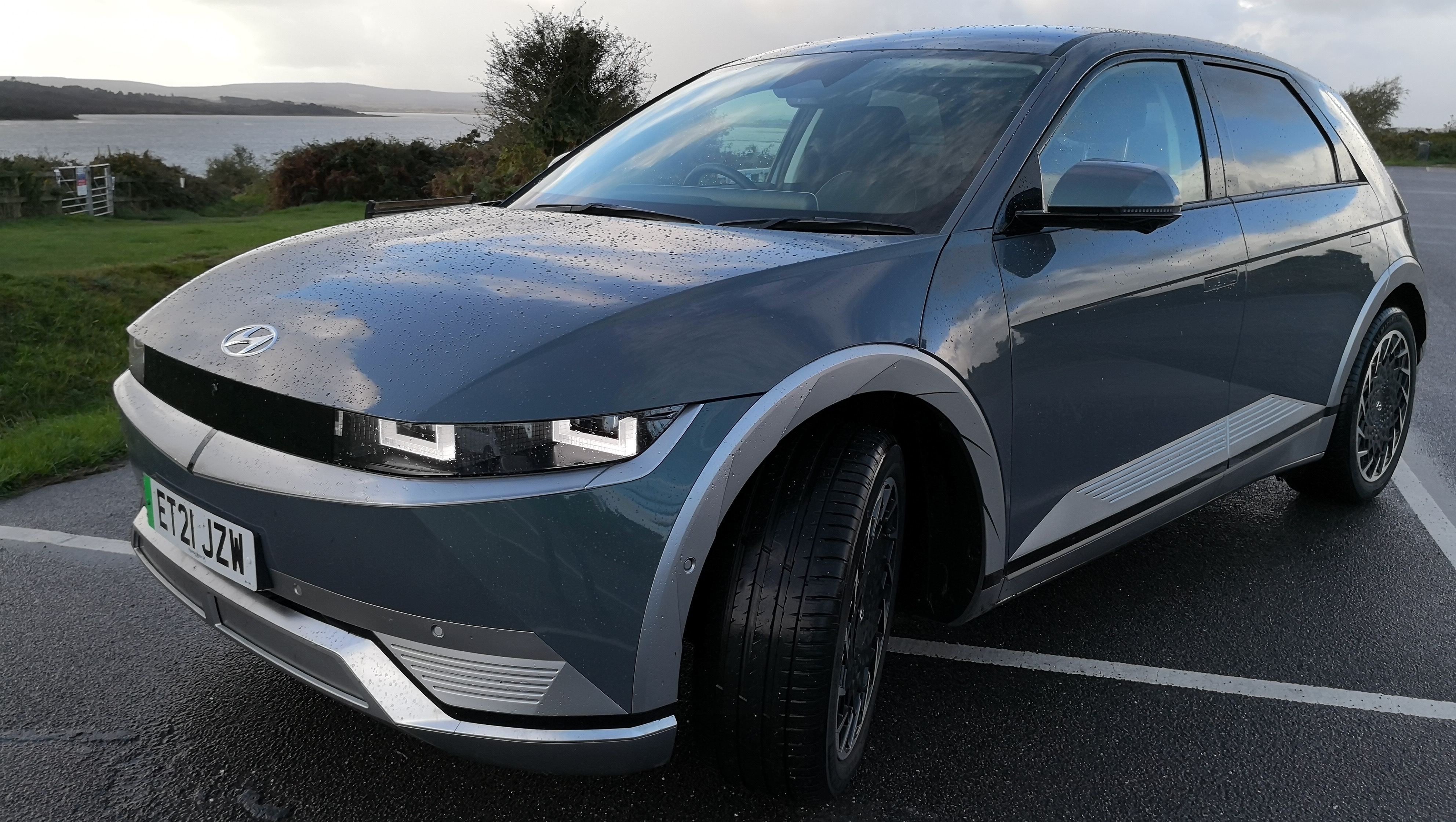
If you’re looking for a quality EV that’s not obscenely priced, but more feature-rich than the cheapest EVs on the market, then look no further than the Hyundai IONIQ 5. It packs up to 300 miles of range, 350 kW rapid charging, a 0-60 time of 5.2 seconds, and has a starting price of just $44,000.
The interior includes a pair of 12.3-inch displays, one as a central infotainment system and the other as the digital gauge cluster behind the steering wheel. More premium models also come with blind spot monitoring, smart parking assist and an augmented reality heads-up display. Those can be pretty useful, even if they do sound rather frivolous.
As we noted in our Hyundai IONIQ 5 review, it’s a car that offers a bunch of cool tech, excellent performance, and a practical design that’s sure to appeal to just about anyone.
Jaguar I-Pace
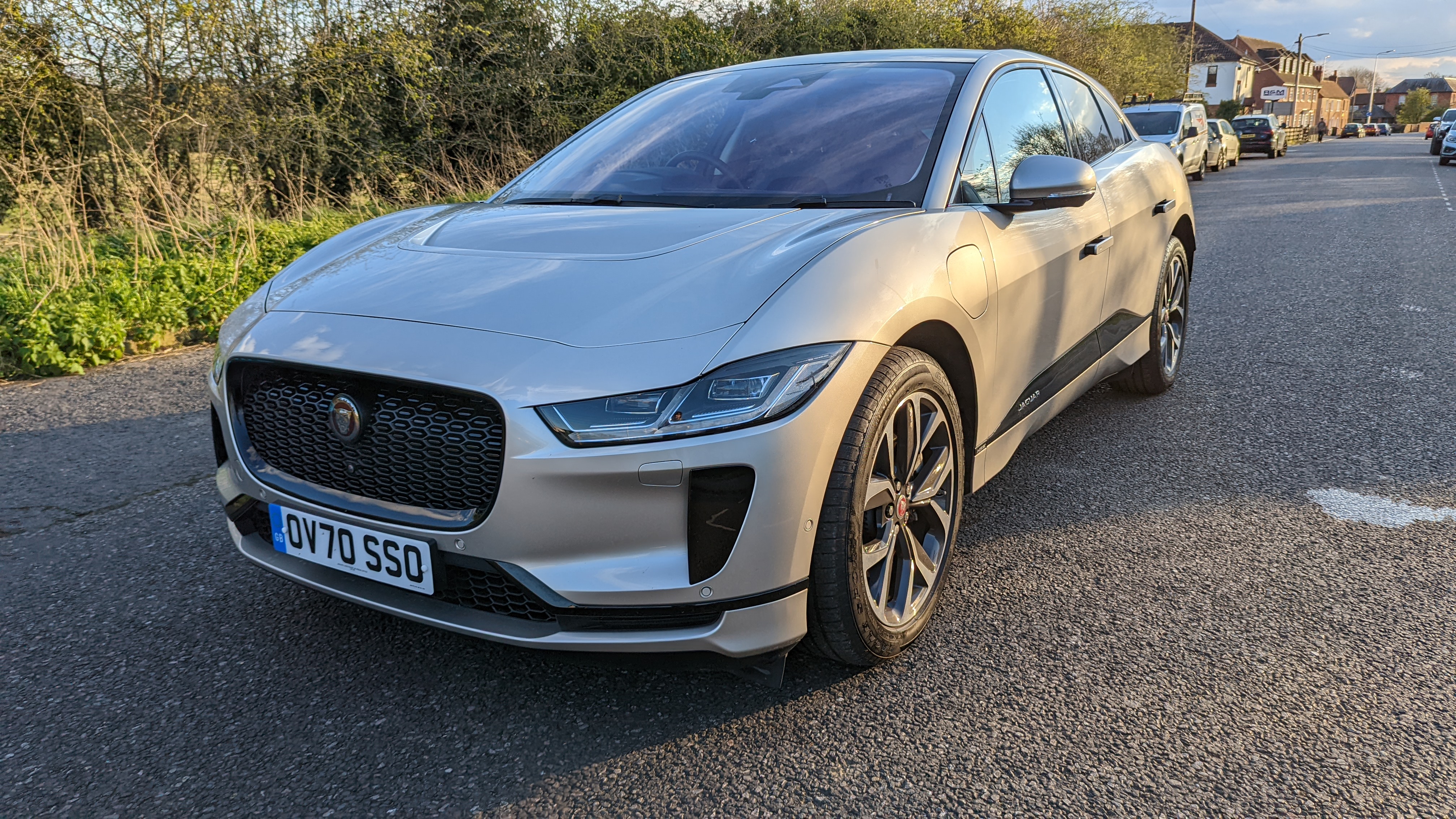
Jaguar’s premium electric SUV is a beast, starting at $71,300, but you are getting a very nice car out of it. The I-Pace has an EPA-rated range of 234 miles, a 0-60 time of 4.5 seconds, top speed of 124 mph, and 20-51 cubic feet of cargo space — depending on whether you fold the back seats down or not.
This being a Jaguar, the I-Pace has an incredibly premium feel to the interior, along with a smorgasbord of cool tech. Autonomous lane keeping, a virtual heads-up display, ultra-customizable seats for maximum comfort (and profiles to remember who’s driving), two-zone climate control and a 12.3-inch infotainment display with support for wireless versions of Apple CarPlay and Android Auto.
Having just spent two weeks driving it for our Jaguar I-Pace review, I can tell you that it definitely isn’t a car to be ignored.
Kia EV6
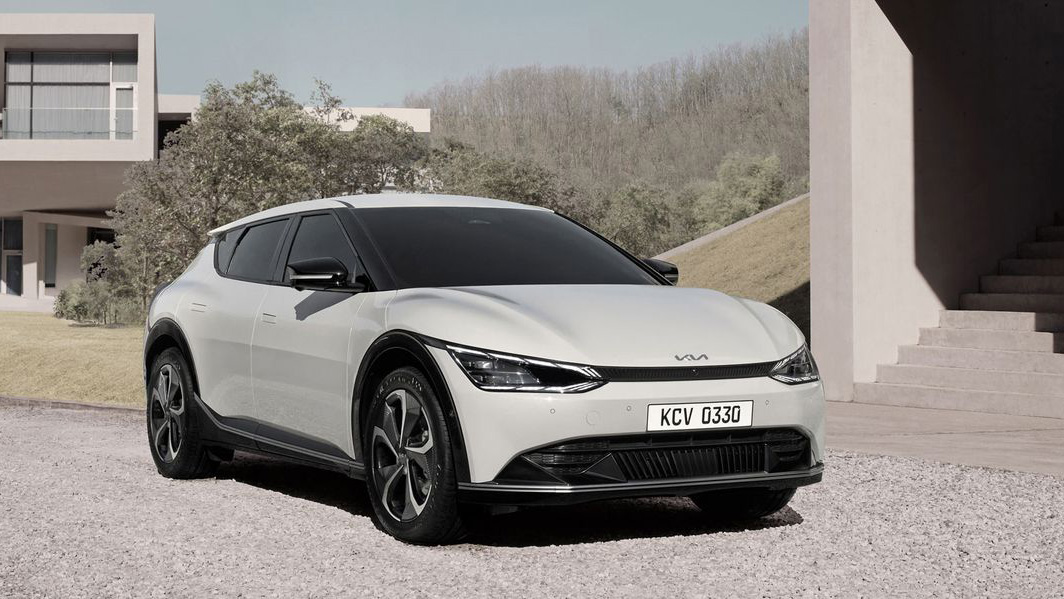
The Kia EV6 isn’t too dissimilar from the Hyundai IONIQ 5 where looks are concerned, which is no great surprise since the two share the same platform — Hyundai’s E-GMP. But that doesn’t make it any less of a worthwhile option, especially since the $40,900 starting price is more than $3,000 less than the cheapest IONIQ 5. But what do you get for your money?
Kia sends this car out with 310 miles of EPA-rated range, a 0-60 time of 4.5 seconds, semi-autonomous driving mode, up to 502 cubic feet of cargo space and up to 2,300 pounds of towing capacity. Kia also promises a roomy interior with a bunch of fancy tech, including an AR heads-up display and dual 12.3-inch infotainment and driver information displays.
Find a 350 KW fast charger and you can recoup 217 miles of range in just 18 minutes. In short, if you’re after a compact crossover, the Kia EV6 is one to consider.
Mercedes Benz EQS

The current flagship in Mercedes’ electric car line-up is a pricey choice, but the $102,310 starting price doesn’t have to sting so much thanks to the federal tax credit. That hefty price tag can be justified by all the things the electric S-Class has to offer too.
The EQS can take you up to 350 miles on a single charge — one of the longest EV ranges — a 0-60 time of 4.1 to 5.9 seconds alongside 22-63 cubic feet of cargo space. That’s SUV-rivaling amounts of space in a sedan, and shows just how spacious this car actually is.
Inside you get all the luxuries of Mercedes, with plenty of room to get comfortable, and an optional Hyperscreen that features three separate touchscreens under a single pane of glass. On top of that you get 200kW rapid charging, which can take you from 10 to 80% in 31 minutes, and Mercedes’ active lane-keeping autonomous driving system.
Rivian R1T

The electric truck space is on the verge of blowing up, and Rivian managed to make it to market just in time. While not the first all-electric truck on the roads, it’s the only one that is eligible for the federal tax credit. That means the $67,500 starting price could end up as low as $60,000.
Of course getting an R1T that cheap relies on getting the dual motor model with the standard range battery pack, which won’t arrive until 2024. Until then you’re looking at $79,500, or $72,000 with the full force of the tax credit behind it.
For that money you’re getting a quad-motor AWD, 314 mile EPA range estimate, Driver+ autonomous driving assistance, Alexa support, a built-in tire compressor, a 15.6-inch infotainment display and 12.3-inch digital gauge cluster, plus so many more cool little features hiding away. The truck even has a towing limit of 11,000 pounds, and an incredible 3-second 0-60 time.
Volvo C40 Recharge
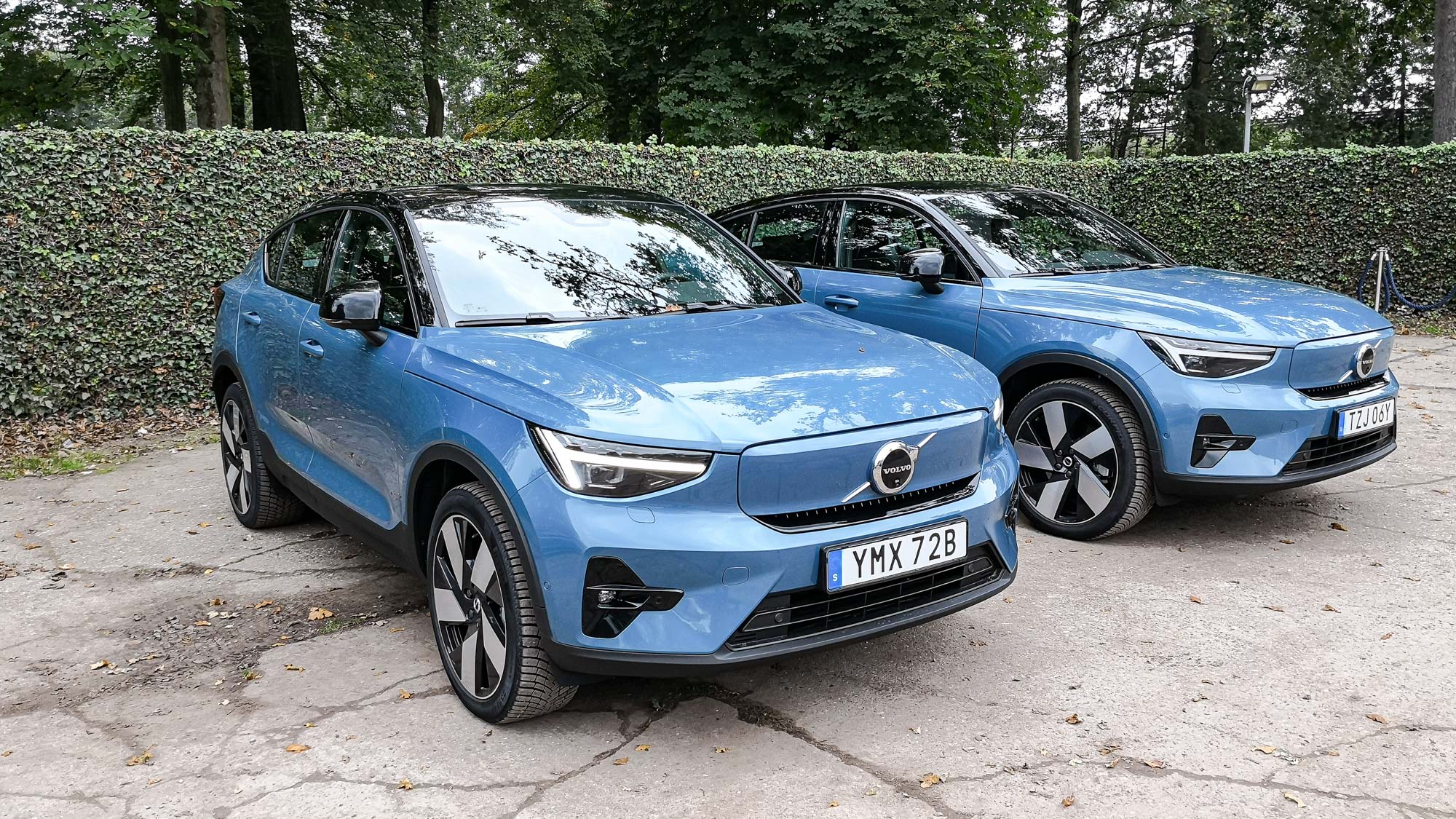
Volvo is well known for creating well built cars that are functional and safe, if a little bit boring and uninspiring. That’s not the case here, with our Volvo C40 Recharge hands-on review noting that this is an impressive EV that oozes with class. Which is exactly what you’d hope to get from a modern SUV. And, with prices starting at $59,845, it’s far from the most expensive electric car on the market.
For that price you get a 5-seat SUV with 14.7 cubic feet of space in the trunk alone. That increases to 45.7 cubic feet when you fold the rear seats down, and means you’ve got space to pack plenty of stuff into the back. There’s a frunk too, if you need to store a few essentials or a couple of bags of groceries.
Acceleration comes with a 0-60 time of as low as 4.9 seconds, with an advertised EPA range of 223 miles. Meanwhile the 150 kW rapid charger can take you from 10-80% in around 40 minutes. Those aren’t premium-tier specs, but you still get the high-tech feature like a 12-inch driver display, 9-inch central infotainment screen (with buttons) and autonomous driver assistance to make your road trips an absolute breeze.
What is the EV federal tax credit and how does it work?
The electric vehicle federal tax credit is a way of easing the burden of buying a brand new electric car. Because EVs don’t come cheap, and financial incentives are usually a great motivator for people.
The federal tax credit means anyone who purchases a plug-in electric will be able to claim a tax credit worth up to $7,500. This applies to both all-electric cars and plug-in hybrids, though the amount you can claim will depend on the battery capacity of the vehicle in question. So certain low-capacity hybrids, like the plug-in Toyota Prius, mean you’re only eligible for a fraction of the full tax credit.
Being a tax credit, how much you claim back will also depend on how much income tax you actually owe. So if you only owe $5,000, your credit will only be worth $5,000, and doesn’t rollover into the next tax year.
Which carmakers are eligible for the tax credit?
All automakers are eligible for the federal tax credit, provided they sell all-electric or plug-in hybrid cars. Which is quite a lot of them, and in fact only two major electric automakers aren’t eligible at all — on account of them selling too many cars to qualify. Currently the threshold is 200,000 sales of any plug-in car.
The companies that are no longer included are Tesla and General Motors, who crossed the eligibility threshold in 2018 and 2019, respectively, and were phased out with smaller tax credits over the following 12 months.
At the time of writing no other carmakers have lost eligibility for the federal tax credit, but reports suggest Toyota and Nissan are getting pretty close. So if you have your eyes on an electrified car from either company, and want the full tax credit, a bit of haste might be advisable.
You can see a full list of cars, and how much their credits are worth, over on the Department of Energy’s website.
Even if you car doesn’t have all the latest tech, you can still equip it with one of the best dash cams, the best car heads-up displays, and the best car phone mounts. If you want to know how your car is running, you’ll want one of the best OBD II scanners, too.
For all the latest Technology News Click Here
For the latest news and updates, follow us on Google News.
